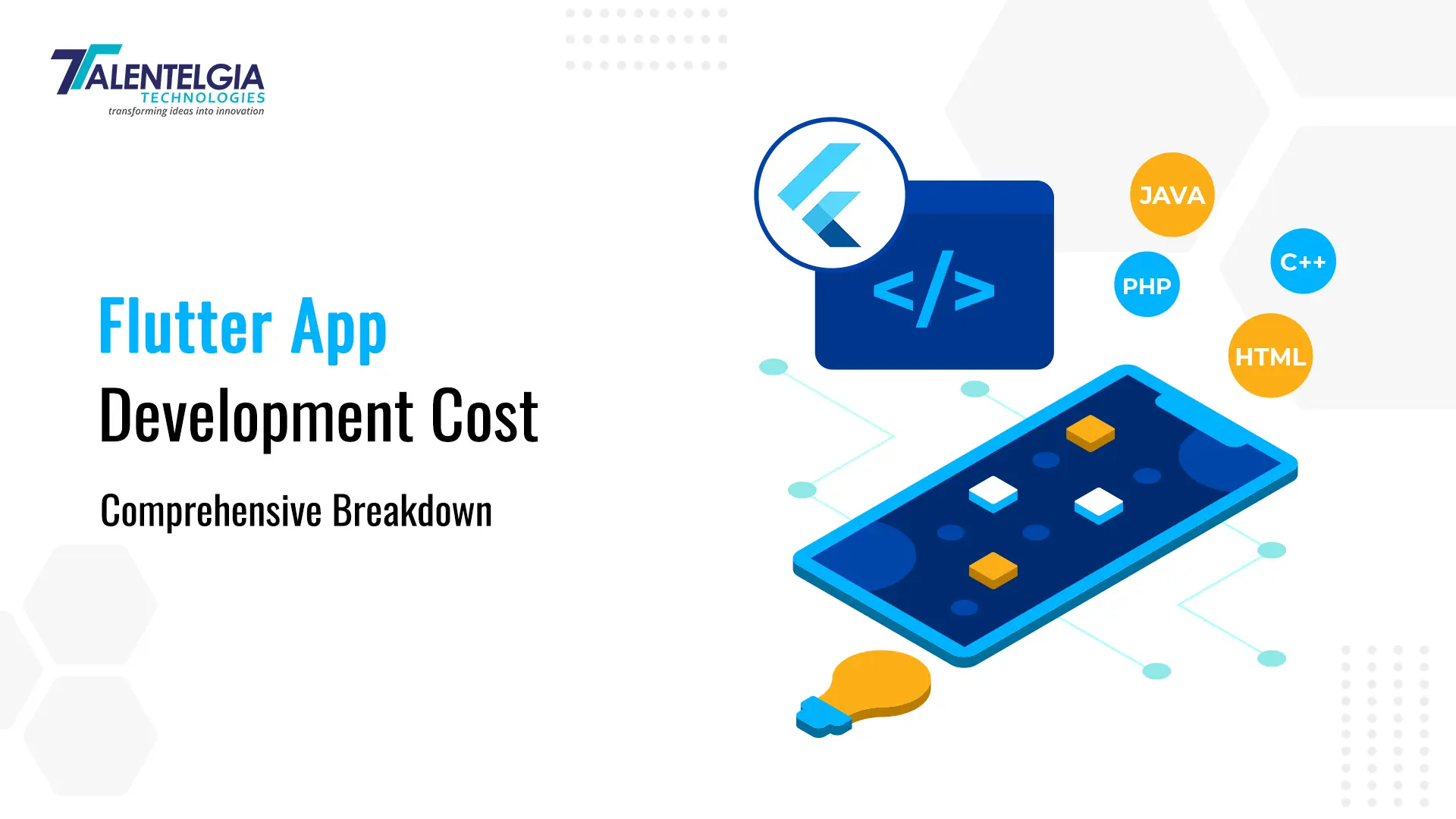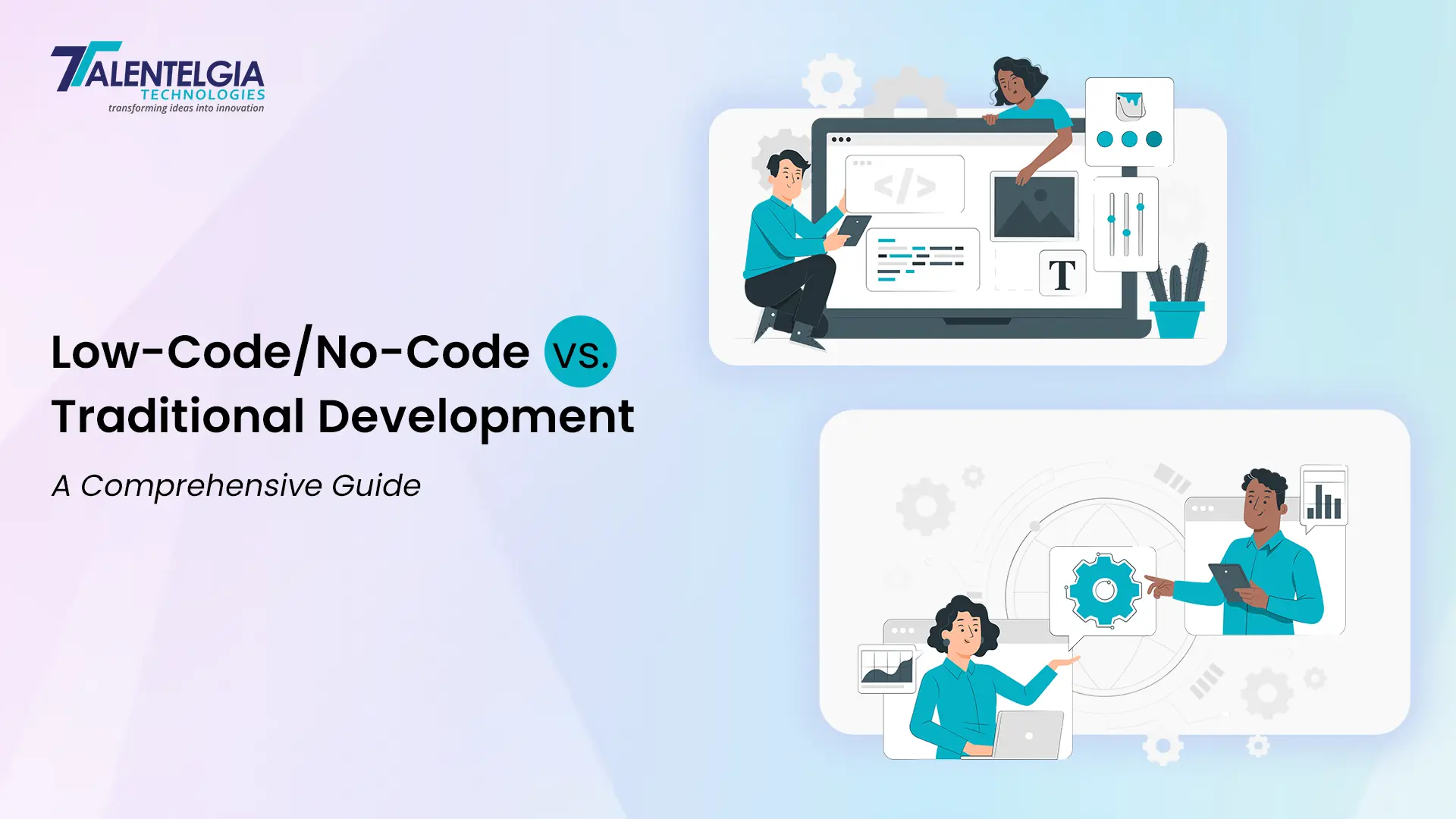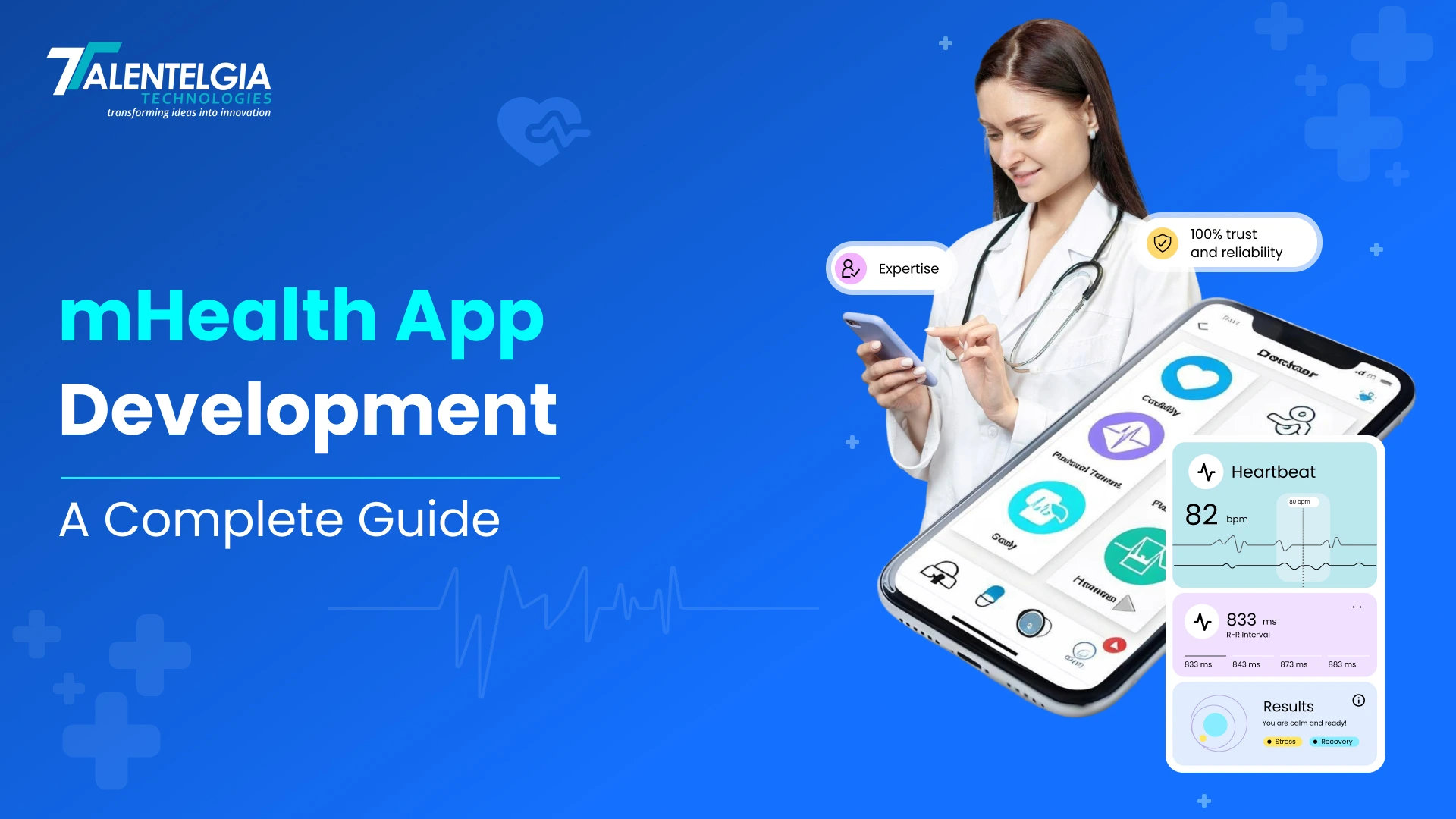In today’s digital age, mobile app development has become an essential part of business as it helps companies and individuals create new solutions and increase customer collaboration. We can use many frameworks to develop mobile applications. Among all the frameworks, Flutter stands out as the top platform due to its performance, flexibility, and ability to create amazing applications for the web or mobile devices.
Additionally, the design allows the app to run smoothly on different devices and sizes, but it also increases complexity and cost. Visually appealing and user-friendly design can increase customer satisfaction and engagement, justifying the investment.
Let’s explore several factors and understand the costs associated with Flutter app development.
Factors Affecting the Cost of Flutter App Development
There are many factors that will affect the overall cost when planning to develop an Android/ iOS app using Flutter. Understanding these factors is important to create a budget and ensure project success.Let’s understand the factors bellow.
Complexity Of The Applications
The complexity of your application is one of the main factors affecting development costs. Simple applications with basic functionality (such as static data or data entry) cost less than complex applications with advanced functionality.
Complex Applications may include features:
- Real-time data processing
- User authentication
- Integration with external APIs
- In-app purchases
- Chat functionality using Flutter Chat SDK
As quality increases, more time and skill is required, increasing the overall development cost. Additionally, if you go for iOS & Android app development using this technology, they may require frequent testing and debugging to ensure reliability and performance.
Application Design
Design plays an important role in the overall cost of app development. Well-designed applications with good user understanding and user experience can be more expensive because they require skilled designers and a lot of development time. Custom animations, graphics, and interactions can be added for an additional fee. For example, an app that requires a logo, good icons, and visible transitions may require a more advanced design.
Additionally, the design allows applications to work well on different devices and screen sizes, but it also increases complexity and cost. Visually appealing and user-friendly design can increase customer satisfaction and engagement, justifying the investment.
Size of the App
The size of the app also impacts the cost. Apps can generally be categorized into three types based on their size:
Pricing by Size of App
| App Type | Description | USA Pricing | India Pricing | UK Pricing |
| Simple App | Basic features, quick and affordable | $10,000 – $20,000 | $5,000 – $10,000 | $8,000 – $15,000 |
| Moderate App | Advanced features, high cost, and effort | $20,000 – $60,000 | $10,000 – $30,000 | $15,000 – $45,000 |
| Complex App | Advanced features, high cost, and effort | $60,000 – $250,000+ | $30,000 – $100,000+ | $45,000 – $200,000+ |
Simple App
These are basic applications with minimal features and a simple user interface. They typically have limited functionality, fewer screens, and straightforward navigation. Development time and costs are generally lower for small apps.
Basic examples include:
- Basic Calculators
- Note-taking apps
- Simple informational apps
Moderate App
These apps have moderate features, more screens, and possibly some custom designs or animations. They might include features like user accounts, basic data storage, social media integration, and simple APIs. Medium apps require more development time and resources compared to small apps but are still relatively manageable.
Basic examples include:
- Task management apps
- Fitness tracking apps
- Recipe apps with user accounts and saved recipes
- Event scheduling apps with notifications and reminders
Complex App
These are complex applications that contain a lot of functions, many instructions, built-in options, and high individuality. In large applications there may be a need to include many third party application services, complicated backup solutions as well as extensive features of security. The essential cost of developing large apps is much more for the complexities and resources needed to support such apps.
Basic Examples includes:
- B2C and C2C commerce applications
- Social Networking sites applications
- Business applications
Additional Factors To Consider
Development Team
Choosing the right development team is an important decision that can affect the cost, quality and success of your project. Understanding these differences is critical to making the right choice for your budget, project, and long-term goals.
Deciding on the correct development team is a serious step that may have an impact on the price, quality, and result of your work. It is, therefore, essential to comprehend these differences so that one can make the right decision concerning their budget, project, and vision.
Pricing by type of team
| Type of Team | Description | USA | India | Australia | UK |
| Freelancers | Independent developers hired on a project basis. | $10,000 – $50,000+ | $5,000 – $20,000+ | $10,000 – $40,000+ | $15,000 – $50,000+ |
| In-House Team | Developers employed directly by your company. | $100,000 – $200,000+ | $50,000 – $100,000+ | $80,000 – $150,000+ | $100,000 – $200,000+ |
| Outsourcing | Development handled by specialized agencies or offshore teams. | $50,000 – $100,000+ | $15,000 – $50,000+ | $30,000 – $80,000+ | $50,000 – $100,000+ |
Freelancers
Sometimes hiring freelancers is less expensive than hiring employees or full-time employees, especially if the projects are not large. But managing freelancers is not easy, and their success depends on their productivity. Freelancers need to pay attention to clear and concise communication and basic plans developed to complete the project.
Pros:
- Cost Effectiveness: Short-term jobs are cheaper than full-time jobs.
- Flexibility: Hiring as needed without long-term contracts.
- Access to Diverse Skills: Specialized expertise for specific tasks.
Cons:
- Management Challenges: Harder to manage and coordinate remotely.
- Variable Quality: Work quality depends on freelancer’s productivity.
- Communication Issues: Requires clear instructions and frequent check-ins.
In-House Team
Maintaining an in-house development team with direct control over project timelines, priorities and communications. This setup can lead to faster iterations and easier collaboration with other departments. However, it often comes with higher costs due to salaries, benefits, office space, and equipment expenses.
Pros:
- Direct Control: Greater oversight and alignment with company goals.
- Faster Iterations: Quicker response and collaboration.
- Easy Collaboration: Seamless integration with other departments.
Cons:
- High Costs: Expensive due to salaries, benefits, and overhead.
- Limited Flexibility: Fixed workforce, less adaptable to changing needs.
- Resource Intensive: Requires significant investment in office space and equipment.
Outsourcing
Outsourcing developers to a specialized organization or external team can provide a balance between cost and quality. Organizations often have experienced teams with diverse skills and design development processes, which can lead to better project management and better results. Offshoring is particularly expensive due to reduced labor costs in regions such as Asia, Eastern Europe or Latin America. However, effective communication and cultural integration are essential to overcome the challenges caused by time differences and language barriers between regions.
Pros:
- Cost-Effective: Lower labor costs in certain regions.
- Experienced Teams: Access to skilled professionals and established processes.
- Scalability: Easy to scale resources up or down as needed.
Cons:
- Communication Barriers: Time zone differences and language issues.
- Quality Control: Ensuring consistent quality can be challenging.
- Cultural Differences: Potential for misunderstandings and integration issues.
Location of the Development Team
The geographical location of your development team can significantly impact costs and project dynamics. Developers in regions with higher standards of living, such as North America, United Kingdom, India or Australia, typically pay more per hour than manufacturers in emerging markets, such as India, Ukraine, or Vietnam. While cost is important, language skills, cultural differences, and time preferences are other factors to consider when choosing a development team. No matter where the members are, communication and cooperation between them will play an important role in the success of the project.
Pricing by country ( hourly pricing of flutter development )
| Country | Description | Cost Range |
| United States | High-cost, premium expertise | $100 – $300 per hour |
| United Kingdom | Skilled, quality focus | $98 – $280 per hour |
| India | Cost-effective outsourcing hub | $7.00 – $28.00 per hour |
| Australia | High-cost, quality focus | $105 – $280 per hour |
Ways to Reduce Flutter App Development Costs
Clearly define your app requirements to avoid scope expansion and unexpected costs. A detailed project plan helps the development team understand your needs, preventing costly changes and revisions later on.
MVP Approach
Start with the minimum viable product (MVP) to test your idea with limited features before investing in the full list. This allows you to measure customer satisfaction and make informed decisions about additional features. To know more about MVP Click here
Reuse Existing Code
Use existing libraries and frameworks to reduce development time. Flutter reduces coding time and costs by providing a variety of pre-built components that can be integrated into your application.
Outsource Wisely
Choose a professional and reliable outsourcing provider to make sure it works well within your budget. A competent outsourcing team can deliver quality solutions without compromising the quality of the application.
Thorough Vetting: Perform a feasibility study and evaluation on potential outsourcing partners to confirm they have what it takes and they have worked on similar projects before.
Set Clear Expectations: Make your goals and objectives clear for the project; also explain deadlines for various phases and the overall budget to prevent confusion and miscommunication.
Use Contracts: Draft detailed contracts that specify project deliverables, deadlines, quality standards, and payment terms to protect both parties and provide clarity on expectations.
Regular Communication
Maintain regular communication with your development team to avoid misunderstandings and keep the project running. Regular analysis and updates help resolve issues quickly and make the development process more efficient.
Conclusion
Flutter app development cost depends on many factors including; the app complexity, user interface, size, features, developers, and support. When you comprehend these factors and make them a base of your application development strategies, you will be able to strategize your budget effectively, and therefore the process of application development will be considered a success. Making smart choices about your development team and strategy can help you manage costs while delivering quality products.
By considering these factors throughout the development lifecycle, organizations can strike a balance between cost-effectiveness and delivering best Flutter applications. This approach not only produces great results, but also opens up new expansion and improvement opportunities in future development plans.
We believe that the information provided will give you a clear idea of the flutter app development cost and make a decision on developing a flutter app successfully.


 Healthcare App Development Services
Healthcare App Development Services
 Real Estate Web Development Services
Real Estate Web Development Services
 E-Commerce App Development Services
E-Commerce App Development Services E-Commerce Web Development Services
E-Commerce Web Development Services Blockchain E-commerce Development Company
Blockchain E-commerce Development Company
 Fintech App Development Services
Fintech App Development Services Fintech Web Development
Fintech Web Development Blockchain Fintech Development Company
Blockchain Fintech Development Company
 E-Learning App Development Services
E-Learning App Development Services
 Restaurant App Development Company
Restaurant App Development Company
 Mobile Game Development Company
Mobile Game Development Company
 Travel App Development Company
Travel App Development Company
 Automotive Web Design
Automotive Web Design
 AI Traffic Management System
AI Traffic Management System
 AI Inventory Management Software
AI Inventory Management Software
 AI Software Development
AI Software Development  AI Development Company
AI Development Company  AI App Development Services
AI App Development Services  ChatGPT integration services
ChatGPT integration services  AI Integration Services
AI Integration Services  Generative AI Development Services
Generative AI Development Services  Natural Language Processing Company
Natural Language Processing Company Machine Learning Development
Machine Learning Development  Machine learning consulting services
Machine learning consulting services  Blockchain Development
Blockchain Development  Blockchain Software Development
Blockchain Software Development  Smart Contract Development Company
Smart Contract Development Company  NFT Marketplace Development Services
NFT Marketplace Development Services  Asset Tokenization Company
Asset Tokenization Company DeFi Wallet Development Company
DeFi Wallet Development Company Mobile App Development
Mobile App Development  IOS App Development
IOS App Development  Android App Development
Android App Development  Cross-Platform App Development
Cross-Platform App Development  Augmented Reality (AR) App Development
Augmented Reality (AR) App Development  Virtual Reality (VR) App Development
Virtual Reality (VR) App Development  Web App Development
Web App Development  SaaS App Development
SaaS App Development Flutter
Flutter  React Native
React Native  Swift (IOS)
Swift (IOS)  Kotlin (Android)
Kotlin (Android)  Mean Stack Development
Mean Stack Development  AngularJS Development
AngularJS Development  MongoDB Development
MongoDB Development  Nodejs Development
Nodejs Development  Database Development
Database Development Ruby on Rails Development
Ruby on Rails Development Expressjs Development
Expressjs Development  Full Stack Development
Full Stack Development  Web Development Services
Web Development Services  Laravel Development
Laravel Development  LAMP Development
LAMP Development  Custom PHP Development
Custom PHP Development  .Net Development
.Net Development  User Experience Design Services
User Experience Design Services  User Interface Design Services
User Interface Design Services  Automated Testing
Automated Testing  Manual Testing
Manual Testing  Digital Marketing Services
Digital Marketing Services 
 Ride-Sharing And Taxi Services
Ride-Sharing And Taxi Services Food Delivery Services
Food Delivery Services Grocery Delivery Services
Grocery Delivery Services Transportation And Logistics
Transportation And Logistics Car Wash App
Car Wash App Home Services App
Home Services App ERP Development Services
ERP Development Services CMS Development Services
CMS Development Services LMS Development
LMS Development CRM Development
CRM Development DevOps Development Services
DevOps Development Services AI Business Solutions
AI Business Solutions AI Cloud Solutions
AI Cloud Solutions AI Chatbot Development
AI Chatbot Development API Development
API Development Blockchain Product Development
Blockchain Product Development Cryptocurrency Wallet Development
Cryptocurrency Wallet Development About Talentelgia
About Talentelgia  Our Team
Our Team  Our Culture
Our Culture 
 Healthcare App Development Services
Healthcare App Development Services Real Estate Web Development Services
Real Estate Web Development Services E-Commerce App Development Services
E-Commerce App Development Services E-Commerce Web Development Services
E-Commerce Web Development Services Blockchain E-commerce
Development Company
Blockchain E-commerce
Development Company Fintech App Development Services
Fintech App Development Services Finance Web Development
Finance Web Development Blockchain Fintech
Development Company
Blockchain Fintech
Development Company E-Learning App Development Services
E-Learning App Development Services Restaurant App Development Company
Restaurant App Development Company Mobile Game Development Company
Mobile Game Development Company Travel App Development Company
Travel App Development Company Automotive Web Design
Automotive Web Design AI Traffic Management System
AI Traffic Management System AI Inventory Management Software
AI Inventory Management Software AI Software Development
AI Software Development AI Development Company
AI Development Company ChatGPT integration services
ChatGPT integration services AI Integration Services
AI Integration Services Machine Learning Development
Machine Learning Development Machine learning consulting services
Machine learning consulting services Blockchain Development
Blockchain Development Blockchain Software Development
Blockchain Software Development Smart contract development company
Smart contract development company NFT marketplace development services
NFT marketplace development services IOS App Development
IOS App Development Android App Development
Android App Development Cross-Platform App Development
Cross-Platform App Development Augmented Reality (AR) App
Development
Augmented Reality (AR) App
Development Virtual Reality (VR) App Development
Virtual Reality (VR) App Development Web App Development
Web App Development Flutter
Flutter React
Native
React
Native Swift
(IOS)
Swift
(IOS) Kotlin (Android)
Kotlin (Android) MEAN Stack Development
MEAN Stack Development AngularJS Development
AngularJS Development MongoDB Development
MongoDB Development Nodejs Development
Nodejs Development Database development services
Database development services Ruby on Rails Development services
Ruby on Rails Development services Expressjs Development
Expressjs Development Full Stack Development
Full Stack Development Web Development Services
Web Development Services Laravel Development
Laravel Development LAMP
Development
LAMP
Development Custom PHP Development
Custom PHP Development User Experience Design Services
User Experience Design Services User Interface Design Services
User Interface Design Services Automated Testing
Automated Testing Manual
Testing
Manual
Testing About Talentelgia
About Talentelgia Our Team
Our Team Our Culture
Our Culture

















 Write us on:
Write us on:  Business queries:
Business queries:  HR:
HR: 




